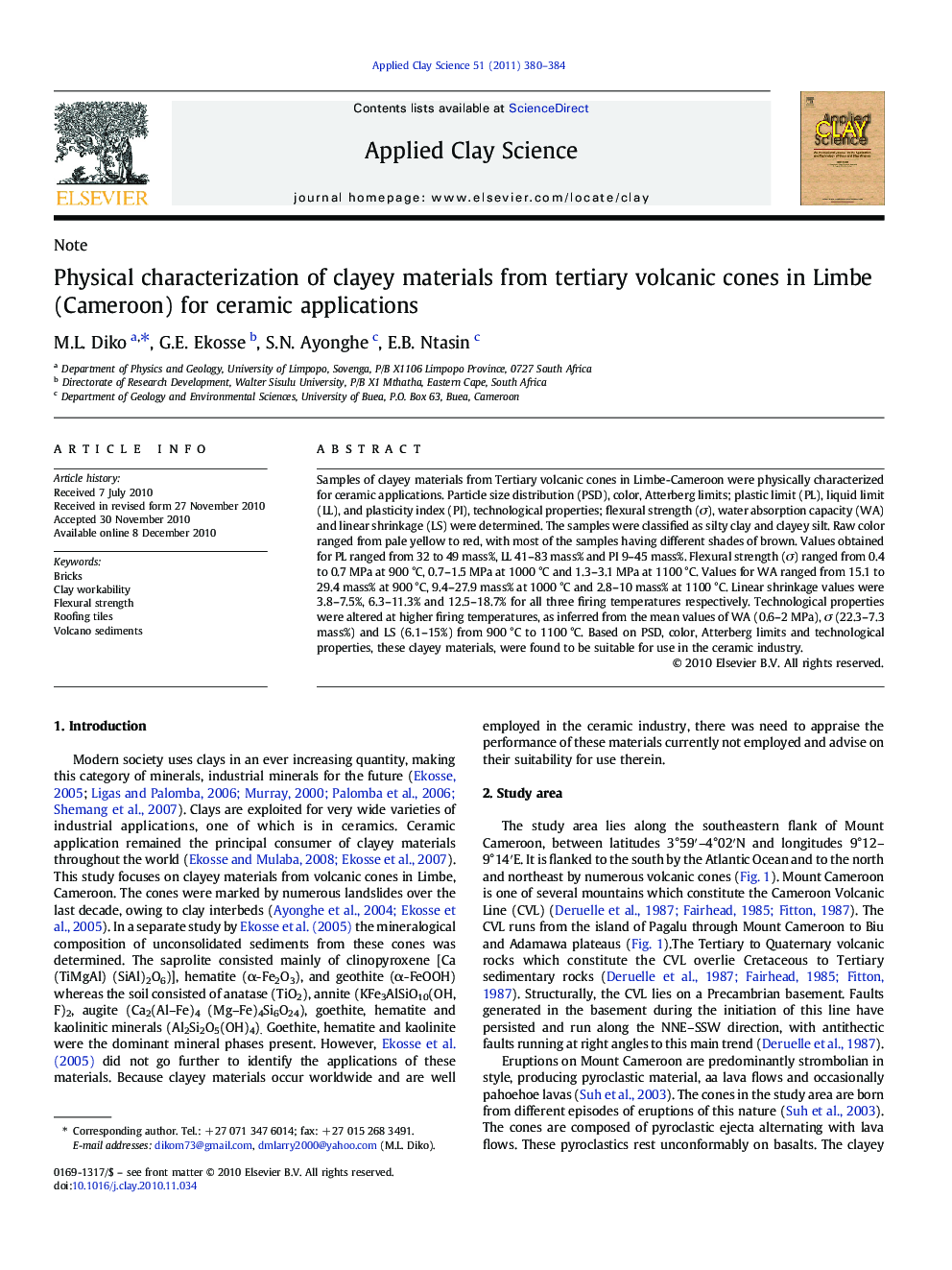| Article ID | Journal | Published Year | Pages | File Type |
|---|---|---|---|---|
| 10676963 | Applied Clay Science | 2011 | 5 Pages |
Abstract
Samples of clayey materials from Tertiary volcanic cones in Limbe-Cameroon were physically characterized for ceramic applications. Particle size distribution (PSD), color, Atterberg limits; plastic limit (PL), liquid limit (LL), and plasticity index (PI), technological properties; flexural strength (Ï), water absorption capacity (WA) and linear shrinkage (LS) were determined. The samples were classified as silty clay and clayey silt. Raw color ranged from pale yellow to red, with most of the samples having different shades of brown. Values obtained for PL ranged from 32 to 49 mass%, LL 41-83 mass% and PI 9-45 mass%. Flexural strength (Ï) ranged from 0.4 to 0.7 MPa at 900 °C, 0.7-1.5 MPa at 1000 °C and 1.3-3.1 MPa at 1100 °C. Values for WA ranged from 15.1 to 29.4 mass% at 900 °C, 9.4-27.9 mass% at 1000 °C and 2.8-10 mass% at 1100 °C. Linear shrinkage values were 3.8-7.5%, 6.3-11.3% and 12.5-18.7% for all three firing temperatures respectively. Technological properties were altered at higher firing temperatures, as inferred from the mean values of WA (0.6-2 MPa), Ï (22.3-7.3 mass%) and LS (6.1-15%) from 900 °C to 1100 °C. Based on PSD, color, Atterberg limits and technological properties, these clayey materials, were found to be suitable for use in the ceramic industry.
Keywords
Related Topics
Physical Sciences and Engineering
Earth and Planetary Sciences
Geochemistry and Petrology
Authors
M.L. Diko, G.E. Ekosse, S.N. Ayonghe, E.B. Ntasin,
